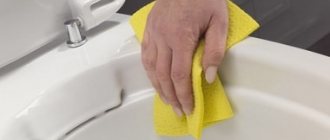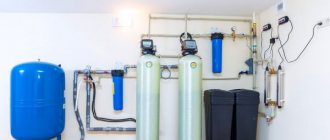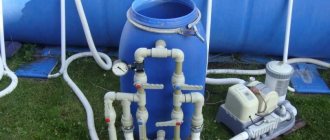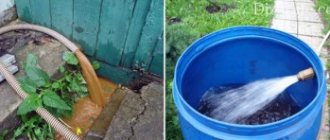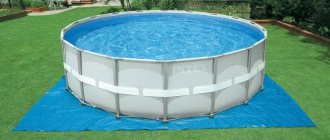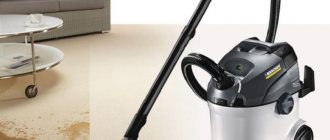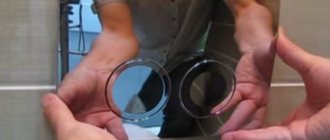Pool owners have a problem - cleaning. Gradually, debris, leaves, dust, insects, human skin secretions, etc. accumulate in the water. All this sinks to the bottom, forming plaque and then causing mold to develop.
A water vacuum cleaner for a swimming pool is designed to clean the bottom. He does cleaning of any complexity.
Purpose
An underwater vacuum cleaner is a useful tool because dirt accumulates in the water. Moreover, this happens much faster than in the house or in the yard.
Dirt and debris not only settle to the bottom in an even layer, but also form an optimal environment for the development and spread of pathogenic fungi and bacteria. And this applies to both inflatable and stationary pools.
Such a layer is formed not only at the bottom, but also at the line between water and air (waterline). If heavier objects sink down, light substances remain on top. There is less dirt on the walls.
Cleaning a pool with a scraper is difficult and time-consuming. In addition, the method is not suitable for portable and inflatable options. It’s also not always possible to clean tiles this way, especially when it comes to gaps between parts.
With the help of vacuum cleaners for swimming pools, you can effectively clean not only the bottom, but also the walls and surface of the water. This device is easy to use. It will save money (including due to the fact that you won’t have to hire a team to clean the pool).
The next advantage is that the device is able to process even the most difficult to reach places (corners, steps, various protrusions and decorative parts).
Intex 28620
Battery-powered handheld vacuum cleaner
Do you prefer to keep everything under control and don’t want to entrust pool cleaning to robots? Then you will love a handheld water vacuum cleaner that runs on batteries. Its distinctive feature is mobility and maneuverability. The unit is not connected to the network; it can be used to eliminate contaminants in the most inaccessible places.
+ Pros of Intex 28620
- with the telescopic tube unfolded, the length of the vacuum cleaner is 2.3 meters;
- the device automatically turns off when there is no water;
- battery life – up to 50 minutes;
- collects sand well;
- lightweight (3.3 kg), aluminum tube;
- cheap, from 3200 rubles.
— Cons of Intex 28620
- It gets clogged if you frequently collect leaves.
Principle of operation
Bottom vacuum cleaners for pools are multifunctional. They are easy to use, so you don't need the help of a specialist. The basic principle of operation of the device is that the equipment absorbs dirty water and passes it through a special filter. After this, the purified liquid goes back into the pool.
As for hand-held devices, things are a little different. First you need to collect them. One end of the hose is connected to the brush, and the other to the skipper. All that remains is to turn on the filtration pump and lower the brush and hose into the water.
An underwater vacuum cleaner for a swimming pool is well suited for cleaning the bottom, walls, and steps. It gently cleans surfaces without causing damage. This extends the life of the pool.
Zodiac Vortex PRO RV 5600
Powerful Performance (2016)
With the help of a programmable robot, the user can clean the pond completely. All you need to do is set one of seven possible cleaning modes. The all-wheel drive water vacuum cleaner is designed to clean large areas, making it suitable for cleaning personal and commercial pools. Steps, passages and ledges will not become an obstacle for the robot; it not only steps over them, but also cleans them of silt and dirt.
+ Pros of Zodiac Vortex PRO RV 5600
- The remote control allows you to adjust the operation of the device;
- equipped with a cyclonic suction system;
- good adhesion to any type of coating - does not fall from steep walls;
- there is a control unit on the body for selecting the shape of the reservoir and cleaning intensity;
- easily removed from water;
- You can set the operating mode by selecting a specific time or day.
— Cons of Zodiac Vortex PRO RV 5600
- works only from the network.
Types of water assistants
Companies offer a wide range of vacuum cleaners. They differ in power, attachments, price and other criteria.
Manual
The unit for manual use is considered the simplest and therefore inexpensive. It consists of a connected hose and nozzle that are attached to the filter. The kit includes a net and a brush. The latter helps to clean the bottom and walls of silt and mucus. The net collects large fractions of debris that float on the surface of the water.
A handheld pool vacuum cleaner is completely safe. It can be used for cleaning small frame or inflatable options.
Semi-automatic
A semi-automatic vacuum cleaner is considered an improved option:
- You can regulate the speed of water flow, as there is a special valve built in that is flushed.
- The brush is more sophisticated so that the equipment copes better with dirt.
- There is a hydraulic type design.
A semi-automatic vacuum cleaner has the same parts as a manual one, but it has a membrane installed that sticks to surfaces. When the litter is collected in one place, it moves to the next zone by jumping.
This vacuum cleaner can be used for inflatable, frame and stationary pools.
Automatic or robot
Automatic vacuum cleaners are also called robots. During their operation, human assistance is not required; they perform all functions autonomously.
The device does not need to be connected to the filter system. The entire electrical part will sink into the liquid. Thanks to this, the device moves along the bottom without problems.
The automatic vacuum cleaner operates at low voltage, thereby saving electrical energy. It is well suited for large pools.
Has 2 modes. The first involves moving independently to search for litter, after which it turns off. The second mode involves the use of a remote control, so control is carried out through it.
This cleaning method is suitable even for pools with a non-standard shape. Water robotic vacuum cleaners are easy to use and save time and effort.
For cleaning natural reservoirs
Any vacuum cleaners that are also used for cleaning swimming pools are suitable for cleaning natural bodies of water. This applies to manual, semi-automatic and automatic designs. Thanks to this cleaning, the water remains clear and the environment is not harmed.
Neptun Z-200
Twin-engine cleaner
The robot will successfully clean the walls of a round, oval or rectangular pool. The path of the unit is zigzag; it can pass through a reservoir a large number of times, so it will capture all the debris on its way. The vacuum cleaner collects sand and large debris well. Due to its tight adherence to the walls of the pool during cleaning, the device effectively cleans the reservoir of silt and other dirt.
Best models
Pool vacuum cleaners differ in technical characteristics, appearance, efficiency, equipment, and more.
According to reviews, the following models are the best.
Intex 28002
The Intex 28002 vacuum cleaner copes well with leaves and debris that are located on the surface of the water. The device is made in the form of a telescopic tube with a brush. To get started, you need to connect the device to a garden hose.
This vacuum cleaner is lightweight. It weighs about 1.6 kg. The length of the handle is large - 2.4 m. Thanks to this, you can get to various places in the pool without much effort. The disadvantage of the model is that it is not possible to clean the bottom.
Bestway 58304
This pool vacuum cleaner is compatible with almost all filter systems, which is an advantage.
A pressure controller and a pre-cleaning filter were added to the device. Thanks to this, cleaning is carried out much faster and the hose does not become clogged.
The following advantages are:
- maneuverability;
- versatility;
- high quality of product parts;
- cost (up to 7 thousand rubles).
As for the downsides, it's weight. The product is heavy - about 5 kg. It has a short hose - only a little more than 6 m. But it is good for small pools.
Bestway 58427
This model is characterized by high performance, good quality and an inexpensive price (only up to 4 thousand rubles).
The vacuum cleaner is battery-powered. Suitable for inflatable vacuum cleaners, Jacuzzis with a diameter of no more than 6 m.
The handle is comfortable. The hose is 3 m long, but this is the only drawback. The battery charges quickly - a maximum of 50 minutes. The device weighs just over 2 kg.
Emaux CE306A SHOWA
This model is intended for large pools. Suitable for both surface and recessed structures. It is a semi-automatic option.
The device must be connected to a garden hose. It vibrates to remove dirt.
The vacuum cleaner is easy to use. The hose is connected to a corrugated one, making the device maneuverable. It makes virtually no noise during operation, but the cost of the device is about 14 thousand rubles.
Zodiac Vortex 4 4WD
This model of vacuum cleaner is suitable for those cases when you need to quickly and inexpensively clean a pool of any size. But you need to take into account that such a model is expensive. It costs about 185 thousand rubles. But this is the only disadvantage of such a vacuum cleaner.
The pump capacity is 16 liters per hour. The cable is 18 m long, which is convenient.
This vacuum cleaner is automatic. It is suitable for cleaning any type of facing material, not only tiles, but also PVC film and polyester coating. Requires 150 W of electricity. In addition to the vacuum cleaner, the kit includes a remote control, and a corresponding trolley is also included.
Aquaviva luna
This water vacuum cleaner is a new development. It was released in 2018. It stands out among competitors with its stylish design.
The frame is durable. Another advantage is good filtration. The cost is about 30 thousand rubles. Productivity indicator - 7 liters per hour.
The length of the cable reaches 12 m, but it must be taken into account that the maximum depth to which the device can be lowered is 180 cm. The required electrical energy during operation is up to 40 W. Can work up to a couple of hours.
The advantages of the new vacuum cleaner include its high performance, low energy consumption, and water suction not only from the front, but also from the sides. The dust container holds a lot of debris, so you can clean a large pool without stopping.
The disadvantages include the heavy weight - almost 6 kg. You also need to consider cable length restrictions. The maximum size of the pool that can be removed is up to 10 m.
Zodiac MX9
The model is a modern vacuum cleaner. The cost is about 38 thousand rubles.
The vacuum cleaner is highly efficient. The figure is about 10 liters per hour. It has a universal brush; in addition, it comes with 2 types of attachments that can be used to thoroughly clean any dirt. The hose is up to 12 m long. In 1 minute the device moves 8 m.
This vacuum cleaner is well suited for pools with tile and concrete walls. The device moves along the route like the letter “X”. This ensures high quality cleaning. But you need to take into account that due to restrictions on the length of the hose, the size of the pool cannot be more than 10 m.
Kokido Telsa 50
The vacuum cleaner is intended for manual use. It is characterized by high performance, while there is no hose or wires at all.
The device runs solely on battery power. Can be operated autonomously for up to 45 minutes.
The suction power is almost 6 liters per hour. This is enough to collect dirt from the bottom, walls, steps.
The device is simple and convenient to use. The head is floating, so you can clean even hard-to-reach areas. The handle is removable so it can be removed and replaced with a telescopic tube. Thanks to this, it will be possible to collect even strongly stuck debris from the bottom 3 m deep.
But you need to keep in mind that such a vacuum cleaner is only suitable for small pools.
Watertech Pool Blaster Max
This is a hand-held underwater vacuum cleaner. The model is characterized by versatility, high performance and low weight.
On one battery charge it can clean up to 160 square meters. m of surface, and despite such a high speed, the quality of cleaning does not deteriorate.
Used for surfaces made of PVC film, acrylic, ceramic tiles, polypropylene, fiberglass. Can work without a break for up to 1 hour.
It takes a maximum of 10 hours to charge the device. It weighs only up to 2.5 kg. The vacuum cleaner has a flexible cleaning attachment. With this model, you can clean a large pool without much effort.
Watertech Pool Blaster MAX HD
The model is considered one of the best. It has a convenient body, a good built-in filtration system, and high performance indicators. In addition, the product is also lightweight. It weighs only a little more than 2 kg.
The device can clean fiberglass, polypropylene, acrylic surfaces, as well as walls made of ceramic tiles or PVC film. Without breaks, the vacuum cleaner can work for up to 1 hour. Then recharging is required, which lasts from 8 to 10 hours.
To filter liquid, a special set of bags is built into the device. Thanks to this, the vacuum cleaner collects 40% more debris than without them. The cost is up to 20 thousand rubles.
Is it possible to replace it with something?
Using a pool vacuum is not always necessary.
If the pool is equipped with a powerful circulation system with high-quality multi-stage filters, there is no need for additional cleaning.
In addition, the functions of vacuum cleaners are performed by standard devices - skimmers , on the suction pipe of which a mesh container is installed. Water passes through them, and the debris remains in the container, which only needs to be shaken out periodically.
Is it possible to do it yourself?
Instead of buying a vacuum cleaner for cleaning the pool, you can equip it yourself. It should be taken into account that all devices include 2 main parts - a brush and a pump. Additionally, you will need a corrugated hose, rubber seals, and a polypropylene tube.
First you need to make a brush. There are 3 methods. In the first case, you only need to take the brush from the vacuum cleaner and connect it to the hose that collects water. Cleaning will then be of high quality due to the fact that the hole is small. But because of this, the process will take a long time.
For the second method of making a brush, you will need a soldering iron, a grinder, a tee, a plug and a polypropylene pipe. The algorithm is as follows:
- You need to cut a piece of 30 cm from the pipe. Cut it to a width of 0.4 cm and saw it into 2 parts.
- Insert 2 halves into the tee on one side. Then solder them and close them with a plug.
- From the second side, insert a whole tube to the tee. It will connect the brush and the pump.
The third option is to improve the brush. You need to attach an elastic band to the pipe with the hole (like on windshield wipers for a car) and a strip of bristles or foam rubber.
Now all that remains is to connect the corrugated hose to the water intake point using a sewer adapter. The parts must be tightly connected, the elastic bands must fit tightly to them.
Another option is to use a plunger. You have to make a hole in the middle and insert a tube. This design must be put on the water intake. The handle for the brush is made from a pipe. The length should be 1.5-2 m.
What is it, what is it for?
A pool vacuum cleaner is a device that quickly and effectively cleans the water, walls and bottom of the bowl.
With this device you can:
eliminate the need to frequently change water;- unload the pool filtration system;
- clean all elements of the bowl, including the bottom, walls and steps of the stairs;
- the work can be done independently, without the involvement of third parties;
- the possibility of damage to the pool bowl is excluded;
- processing is carried out quickly, at a convenient time.
The average pool cleaning time is 1-1.5 hours.
Where are they sold, at what cost?
These devices are specific, therefore, the easiest way is to order the desired model in one of the many online stores.
How much do the devices cost? The prices for them are different - you can buy an inexpensive manual cleaner for 2-3 thousand rubles, or buy a robot vacuum cleaner with an intelligent cleaning function for 195 thousand rubles.
The choice of a suitable model is made based on your needs, bowl size and your own financial capabilities.
Frequent breakdowns and repairs
It is best to take the vacuum cleaner to a specialized workshop for repairs. Qualified specialists work there who will do everything quickly and accurately. However, if you are using a manual model with a simple design, you can carry out the repairs yourself.
Typical breakdowns:
- failure of the connecting elements for the brush or for the skimmer hole;
- brush breakage;
- rupture or deformation of the corrugated hose;
- wear of filter cartridges, failure of mesh elements.
All these problems can be solved without much difficulty with your own hands. It is necessary to inspect, identify defective parts, disconnect them and replace them with new elements. Sometimes a damaged part can be restored, but its service life will in any case be noticeably reduced.
More complex models of vacuum cleaners require professional repairs , which can only be done by service center employees.
Can it be used for cleaning?
Often, inexperienced users have questions about the possibility of replacing a special water vacuum cleaner with more familiar models.
Simple household electrical appliance
This is impossible . A household vacuum cleaner is designed to work with air; if water gets inside it will cause a short circuit.
Washing
It is also impossible to clean the pool bowl with a washing vacuum cleaner. Firstly, it has the same air suction function as a conventional dry cleaning vacuum cleaner. Secondly, the container for dirty water has a very small volume.
It is enough for delicate cleaning of carpets or upholstered furniture, but the capabilities of a washing vacuum cleaner are incompatible with the volume of swimming pools.
Basic criteria for choosing cleaning equipment
Before deciding to purchase a particular device, it is highly recommended that you familiarize yourself with the nuances that are worth paying attention to. It is important to understand that not every vacuum cleaner will cope with your task.
A responsible approach to choosing cleaning equipment will help you avoid wasting money. Sufficient knowledge will allow you to choose a model that will ideally clean the surface of the tank
Unit power. The parameter is the main selection criterion. It must match the size of the pool bowl. Give preference to those models that can work for about 5 hours without stopping.
Also, sufficient performance will save your time if you decide to choose a manual or semi-automatic vacuum cleaner.
Be sure to check with your consultant how well the device copes with cleaning the surface. Don’t forget to ask whether it is “friendly” with pools of complex configurations.
Cord length . It must be larger than the size of the bowl. Otherwise, you will have to use an extension cord, which is not recommended for safety reasons.
Types of filters and replacement frequency. Having learned about this, you can approximately calculate how much it will take to service the device.
How to use?
The use of a vacuum cleaner is largely determined by its design and range of functionality. Some models (robots) act completely independently, requiring virtually no human attention. However, work with manual and semi-automatic vacuum cleaners is carried out only by the user.
Procedure:
Clean any dirt from the sides of the bowl. This can be done using a regular brush that is not connected to a vacuum cleaner. The main task is to separate the layers from the bowl.- Wait until the mud settles to the bottom. This may take some time while the vacuum cleaner is prepared for use.
- Lower the brush to the bottom and begin collecting debris. You should not drive it chaotically along the bottom; you must follow a certain pattern of passages. This will help speed up the process and achieve maximum cleaning quality.
- At the end of the work, you need to disconnect the hose from the skimmer and, lifting it up, drain the water. Then clean the filter and put the vacuum cleaner away until next time.
In any case, you must carefully study the instructions and act according to their points. You can learn how to use a pool vacuum cleaner here.
Maintenance of seasonal pools
A dacha is a place of seasonal residence, so frame or inflatable pools are often installed on it, which are removed indoors in winter. Let's look at how to care for a pool with a frame base. Basic care consists of:
- water filtration (a suitable filter is always included with the pool);
- removing debris from the surface (with nets or skimmers);
- periodic cleaning with chemicals;
- removing sediment from the bottom of the bowl. (There are various products in the store that can be used to remove sediment from pools, but it is best to find a bottom vacuum cleaner or a special set).
Inflatable pools are most often purchased for children. To maintain cleanliness, it must be completely cleared of water weekly and mucus and sediment must be scraped off. If the volume of the bowl is large, then it is recommended to add disinfectants, because filling the pool with fresh water every week is quite expensive.
Keeping your pool clean is easier than trying to restore a pool that is overgrown and covered in sediment.
Manufacturers
Manufacturers of pool vacuum cleaners are, as a rule, companies engaged in the manufacture of the bowls themselves and related equipment:
| Manufacturer | Manufacturer country | Construction type | Functions | Price range of models |
| Intex | USA | Manual | Connection to a skimmer or own circulation | Low, medium |
| BestWay | USA, China | Manual | Pool connection or independent operation | Low, medium |
| Zodiac | France | Robot vacuum cleaner, semi-automatic | Autonomous operation | Medium, High |
| Aquaviva | China | Robot vacuum cleaner | Autonomous operation | High |
| Kokido | Japan | Manual | Connection to skimmer | Short |
The list of manufacturers is much wider, but it makes no sense to list it in its entirety.
Use of chemistry
Swimming pools are cleaned using a number of chemicals. These substances must be selected so that they provide effective purity and do not harm humans.
They are represented by the chemical industry in several types:
- disinfectants;
- regulating the composition of water;
- preventing water bloom;
- acting against water coagulation.
The latest technology is water disinfection with hydrogen peroxide. When it combines with water, it releases a large amount of active oxygen, which provides disinfection.
The absence of unpleasant odor, allergies and skin irritation is important
pH level adjustment
There are special instant-action tablets that level the pH level, simultaneously disinfect water, and remove plaque in the form of organic deposits from the walls. Today, this is a universal means for maintaining pH levels while simultaneously purifying water. The pH level is measured with special instruments.
The neutral level should be 7 units. A pH of 7 indicates that the water has acquired an alkaline structure, at which salts precipitate, an unpleasant odor appears, and bathers’ eyes may be irritated.
Disinfection
Disinfectant chemicals should be added to the water weekly. They are designed to disinfect water and maintain it in a safe state for humans.
This is especially important if children are constantly swimming in the pool.
Chlorine based
The simplest, but long outdated technology is purification by chlorination. Yes, chlorine instantly destroys all bacteria, fungi and harmful components. Its action maintains water purity for a long time. Today, chlorine is produced in the form of powders, solutions, tablets, granules. There are also ready-made kits for purifying pool water
When using chlorination, it is important to strictly follow the dosage. If family members who are fond of swimming have contraindications to chlorine, other technologies must be used
Bromine based
Using bromine helps get rid of harmful bacteria. It is less aggressive, has no unpleasant odor, and does not have a negative effect on the skin.
Based on active oxygen
Swimming pools are cleaned using active oxygen. This method is well suited for purifying water in small pools. In its effectiveness, active oxygen is many times superior to the effects of chlorine and bromine. It is completely safe for humans and perfectly disinfects water.
Algae control
The water in outdoor pools will certainly bloom if it is not changed regularly and the pool bowl is not cleaned with special means. Green algae remain on the walls and bottom; mechanical cleaning using special reagents is required. Yellow algae grows in the shady part of the pool and is very difficult to remove. They die only from shock doses of chlorine, and the treatment will have to be carried out repeatedly. In this case, after using chlorine it is necessary to neutralize it.
Black algae is the most resistant to chemical treatments and hides in PVC welds around drain holes. Their appearance indicates a complete absence of chlorine in the water. The chemicals change the acidic and alkaline composition of the water, stopping and completely stopping the growth of algae spores.
It is required to measure the presence of chemicals, chlorine, salts in the water weekly, and evaluate the pH. There are special testers for this. To clean the surfaces of the pool from algae, use a water vacuum cleaner, rinse the filters with chemicals, and replace the cartridges.
A physical and chemical process in water that is important for small dispersed particles of pollution to become larger. Then they are easier to remove from the water. There are special substances - coagulants. They are added to the water before cleaning the pool; after the coagulation process, large parts of the pollution settle at the bottom and are easily collected with a vacuum cleaner. The dirt flakes are then just as easily washed out of the filters.
Removing rust
Tap water often contains a large amount of iron, so it can acquire a reddish-brown tint and form a black, dried coating after draining. Swimming in such a pool will not only be unpleasant, but also dangerous.
You can clean water from rust using coagulants - organic, for example, aluminum polyoxychloride (hydrochloride) or synthetic based on aluminum or iron sulfates, titanium dioxide. The preparations react with iron elements, after which they precipitate in the form of large flakes, catchable by filters and vacuum cleaners. However, before adding coagulants to water, experts recommend measuring and, if necessary, normalizing the pH of the water. Normally, this indicator should be in the range of 7.2–7.4.
To determine pH, special devices (pH meters) or test strips are used. Measurements should be taken weekly, as well as after each addition of water and precipitation.
The pH level of water is an important indicator on which the effectiveness of chemical and organic reagents depends.
As you can see, keeping your own pond clean and tidy at your dacha is not an easy task. However, the modern market offers a wide range of water purification products. The main thing is not to make a mistake with your choice and choose the optimal equipment and preparations, taking into account the type of pool, its workload and the individual characteristics of the people who use it.
